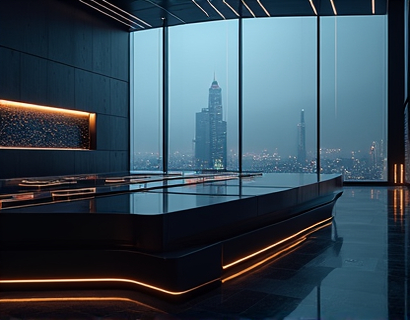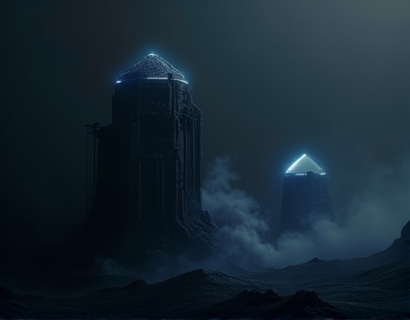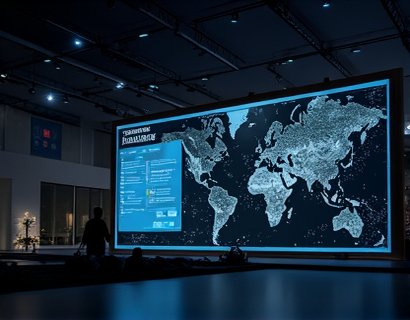Streamlining Web Development with Custom Placeholder Code Generators
In the fast-paced world of web development, efficiency and productivity are paramount. One innovative solution that has gained traction among developers, designers, and business owners is the custom placeholder code generator. This tool is designed to save time and enhance efficiency by providing customizable templates that can be used to generate placeholder website code. The primary goal is to create professional and visually appealing content without the hassle of manual coding, ensuring that the website design is both functional and attractive.
The concept of using placeholder code is not new, but the advancement in technology has made it more accessible and user-friendly. Traditionally, developers would spend a significant amount of time creating dummy content to test layouts and designs. With a custom placeholder code generator, this process is automated, allowing professionals to focus on more critical aspects of web development.
Benefits of Using Placeholder Code Generators
One of the most significant advantages of using a placeholder code generator is the time savings. Instead of writing code from scratch, developers can quickly generate a basic structure with dummy content. This allows for faster prototyping and iteration, which is crucial in today's competitive market where speed to market can be a decisive factor.
Another benefit is the consistency and professionalism that placeholder code provides. The generators can produce code that adheres to best practices and design standards, ensuring that the placeholder content looks polished and professional. This is particularly important for clients who want to see a realistic preview of their future website.
How Placeholder Code Generators Work
Placeholder code generators typically offer a range of customization options to suit different needs. Users can choose from various layouts, color schemes, typography, and content types. For instance, a generator might allow you to select a grid layout, a single-column layout, or a more complex multi-column design.
The customization extends to the content itself. Users can choose between different types of dummy text, such as Lorem ipsum, which is a standard placeholder text used in the industry, or more relevant content that mimics the actual content that will be used on the live site. Some advanced generators even allow for the inclusion of images, buttons, and other interactive elements.
Tools for Different User Groups
Placeholder code generators are versatile tools that cater to a wide range of users, including web developers, designers, digital agencies, tech startups, and e-commerce businesses. Each group can benefit in unique ways:
- Web Developers: Can quickly test and iterate on designs without writing extensive boilerplate code.
- Designers: Can focus on visual aspects and user experience without getting bogged down by coding details.
- Digital Agencies: Can provide clients with realistic previews faster, enhancing client satisfaction and project efficiency.
- Tech Startups: Can prototype their ideas rapidly, saving resources and accelerating the development process.
- E-commerce Businesses: Can create placeholder stores to visualize product layouts and user journeys before actual development begins.
Enhancing Creativity and Productivity
The use of placeholder code generators not only saves time but also enhances creativity and productivity. With the basic structure and dummy content in place, developers and designers can focus on the creative aspects of their work. They can experiment with different designs, layouts, and user interactions without the initial coding hurdles.
Moreover, the ability to quickly generate multiple variations of a design allows for more thorough testing and refinement. This iterative process can lead to more innovative and user-friendly solutions, ultimately resulting in a better end product.
Integration with Development Workflows
Integrating placeholder code generators into existing development workflows can be seamless. Many generators provide outputs in common formats such as HTML, CSS, and even JavaScript, making it easy to integrate the placeholder content into existing projects. This flexibility ensures that the generators can fit into various development environments and tools.
Additionally, some generators offer plugins or extensions for popular development frameworks and content management systems, further enhancing their utility. This integration capability means that developers can continue using their preferred tools while benefiting from the efficiency gains provided by placeholder code.
Best Practices for Using Placeholder Code
While placeholder code generators are powerful tools, it's important to use them effectively to maximize their benefits. Here are some best practices to consider:
First, define clear requirements and objectives for your project. Knowing what you need will help you choose the right generator and customize it appropriately. This ensures that the placeholder content aligns with your vision and functional needs.
Second, use placeholder code as a starting point rather than a final product. While the generated content looks professional, it is not meant to be user content. It's essential to replace the dummy content with real, relevant content once the design is finalized.
Third, keep the design flexible and scalable. The placeholder code should support responsive design principles to ensure that the website looks good on all devices. This is crucial for providing a consistent user experience across different platforms.
Case Studies and Success Stories
Several notable projects have successfully utilized placeholder code generators to streamline their development processes. For example, a digital agency used a placeholder code generator to prototype a new e-commerce platform for a client. The generator allowed the team to quickly set up a realistic storefront, complete with product listings and a shopping cart. This early prototype was crucial in gathering client feedback and making necessary adjustments before actual development began.
Another instance involves a tech startup that used placeholder code to visualize their minimum viable product (MVP). The generator helped the team create a functional landing page with key features highlighted. This approach not only saved time but also helped in securing early investments by demonstrating a clear and professional product vision.
Future Trends in Placeholder Code Generation
The future of placeholder code generation is exciting, with several trends on the horizon. One such trend is the integration of artificial intelligence (AI) to enhance the customization and intelligence of generators. AI can analyze project requirements and suggest optimal designs and layouts, further reducing the time and effort required from developers and designers.
Another trend is the increased focus on accessibility. Generators are being designed to produce code that meets accessibility standards, ensuring that placeholder content is not only visually appealing but also usable by everyone, including those with disabilities.
Lastly, the rise of headless CMS solutions is likely to influence placeholder code generation. Headless CMSs separate content from presentation, and generators that can work seamlessly with these architectures will become more prevalent, offering even greater flexibility and efficiency.
Conclusion
Custom placeholder code generators are powerful tools that can significantly streamline the web development process. By providing quick, customizable, and professional placeholder content, these generators enable developers, designers, and business owners to focus on what they do best—creating exceptional user experiences. As technology continues to evolve, the role of these generators will only become more important, making them an essential part of the modern web development toolkit.











































